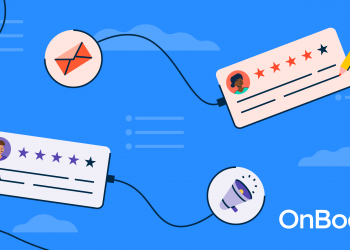Direct to Consumer (DTC) Marketing: The Complete Guide, with Strategies, Tactics, and Examples (2022) – crowdspring Blog
Working with established retailers has its advantages.
But to build a strong brand that stands out, you must look for ways to make independent decisions, access direct customer data, and interact more closely with your target audience.
Direct-to-consumer (DTC) marketing can help you reach these goals.
What is direct-to-consumer (DTC) marketing?
Direct-to-Consumer marketing is when brands bypass traditional distribution channels and sell directly to their customers.
Historically, many brands relied on retailers to help sell and distribute their products. Brands had to sell their products for a deep discount while surrendering some control over their marketing strategy.
In recent years, however, DTC marketing has increased among consumer goods due to the explosive growth of the internet and online shopping.
By cutting out the middleman, DTC businesses can target, market, sell, and distribute directly to their customers, resulting in a better relationship with them. They can also offer valuable perks such as product variety and lower prices.
DTC vs. BTC: What is the difference?
Business-to-consumer (B2C) companies also market to consumers but often sell through digital and/or physical retail outlets. They do not need a storefront or website of their own to generate sales. The retailer handles most of the marketing and lead generation.
DTC brands differentiate by putting the consumer first. There’s no intermediary to rely on for marketing.
DTC brands must focus on bringing customers directly to them and forming strong relationships over time to succeed.
In DTC marketing, retention wins over acquisition.
DTCs are responsible for the entire customer journey. As a result, they can offer more personalized and consistent experiences than the average e-commerce company. This drives customer loyalty.
But while direct-to-consumer marketing offers apparent advantages, it will require more marketing creativity and new strategies that challenge conventional retail marketing methods.
Let’s examine the advantages of direct-to-consumer marketing and discover what we can learn from successful DTC brands.
The benefits of DTC Marketing
Brand independence
Most businesses rely on retailers and other intermediaries to promote their brands and reach their target consumers.
However, they are ultimately compelled to pay a premium to stand out because these retailers also sell hundreds of products from other brands vying for the same target market.
Online marketplaces may also be another alternative. They are more adept and effective in attracting hot leads and paying customers.
However, more businesses are deciding to opt out of such platforms because of price-cutting by other sellers and the proliferation of counterfeit goods, which are often difficult to control.
DTC marketing allows complete business control over its product, marketing, branding, and distribution activities.
Brands can also present their value propositions directly to consumers through online storefronts.
And lastly, DTC marketing gives business owners greater control over their supply chain and customer information.
Omnichannel selling
Consumer buying behavior has changed. Omnichannel shopping – where buyers now seek and expect a consistent customer experience, regardless of where they shop – is fast becoming a norm.
The Harvard Business Review reports that 73% of customers use multiple channels within their buying journey. Additionally, 90% of customers expect seamless communication across services.
DTC provides a unified, consistent customer experience.
DTC marketing also allows setting up a limitless eCommerce platform where customers can shop across multiple channels.
In addition, DTC businesses can also provide customers with access to all products from the brand’s line and, more importantly, various payment options that may not typically be available in traditional or retail channels.
Bring innovative ideas to market faster
By not having to deal with third-party channel coordination, seasonal delays, or other disruptions to the retail process, manufacturers can make product changes and get to market more quickly.
A DTC model allows instant customer feedback regarding products, product packaging, and marketing efforts. In this way, brands can test their product concepts quickly and get customer input before investing in large quantities of production runs.
Better profit margins
One of the biggest arguments favoring the DTC model is cutting out the intermediaries.
Eliminating factors that stand between a small business and its customers also eliminates entities that curb profit margins.
For instance, if you were in the clothing business, you would need to sell to wholesalers and retailers first and set a price low enough that they can mark them up and resell them to consumers.
A wholesaler limits your profit margin (how much profit you make compared to the cost of your product).
Moreover, the more distributors and retailers there are in one business model, the lower the lifetime value of each customer. This is because you’ll have to deal with more go-betweens to be able to get your product out to market.
Instead of selling products at a discount to retailers, business owners and manufacturers can reinvest extra profit into other aspects of the business, such as product development and/or marketing strategy.
Last but not least, if a brand takes a retail-only approach, they often miss out on opportunities to resell, upsell, and cross-sell.
In DTC marketing, all testing is done with existing customers (instead of hypothetical sales so often found in traditional market research), so DTC brands can have that elbow room to test different offers and create upsells and cross-sells at a lesser cost.
Direct understanding of your target demographic
For decades, manufacturers relied on resellers for data collection. The reseller’s sales figures determine the success or failure of a product. However, this does not provide much insight into why one product sold better than another.
Using DTC marketing, businesses and marketers can communicate directly with consumers and can obtain first-hand and in-depth insights about product development, regional preferences, and buying trends.
The incredible amount of data generated by digital tools and platforms also provide DTC businesses with information to help identify and target high-value segments while troubleshooting customer journey pain points.
Seven ways to optimize your DTC marketing strategy
Direct-to-consumer brands rely heavily on marketing, but there is no one-size-fits-all marketing strategy for every DTC brand.
Each brand, after all, has a unique brand image and a different target audience. Most DTC companies, however, utilize a combination of these tactics to maximize sales and outreach.
Here are 7 of the most popular DTC marketing strategies that help maximize your business’ growth and success:
1. Build a strong brand identity
Businesses can’t rely on introducing their products to customers by offering great prices in retail stores. That would defeat the purpose and benefits of adopting direct-to-consumer marketing.
Additionally, businesses cannot simply list their items for sale online and hope their pricing strategies will attract customers.
Consumers are generally unwilling to trust products available only on the internet unless a well-known brand backs the product.
As a result, creating a strong brand identity is vital, allowing customers to instantly associate your products with a positive image.
And if you already have a strong brand identity, you must ensure that it extends across all your marketing channels. That will make it easier for your customers to recognize and trust your products at a glance.
2. Create a responsive and accessible storefront
Your business website is the point of contact for every purchase decision, drop-off, and call-to-action. It is the backbone of your sales process.
Your online storefront is also the likely first line of contact that makes an impression, so having a simple and clean user interface (UI) will help your prospects grasp your product faster.
3. Personalize the shopping experience
One thing that DTC brands need to note is that due to the primarily online nature of the business, interactions risk becoming impersonal and transactional.
Personalized messaging and products allow DTC brands to build closer connections with customers.
DTC brands need to prioritize personalization to stand out from the competition. Nearly 50% of all customers will become repeat customers after a personalized shopping experience.
To increase customer loyalty and improve customer experience, modify your website content to adopt a more conversational approach, offer personalized product recommendations, and provide excellent customer service.
Some DTC brands even up the ante of the personalized customer experience by employing real-time augmented reality “virtual try-on” to make the online buying experience more interactive and as close to real life as possible.
4. Leverage marketing data to gain unique insights
A DTC brand needs to know how to gather and analyze customer feedback and data across various channels.
To gain a deeper understanding of your customers and boost the success of your DTC brand, you should track key metrics, including cart abandonment rate, profit margin, repeat customer rate, and time spent on your website.
The more a brand knows about its customers, the more successful they are in satisfying them enough to continue doing business with the brand.
Build a database around your customers’ preferences. Document and track your customer journeys across all channels, utilize data analytics tools, and use the results to inform and improve your strategies.
5. Integrate an email marketing strategy
DTC brands often use digital channels, but some of these channels offer limited access to consumer data.
As a result, some DTC businesses may be unable to independently verify the integrity of the data collected.
Furthermore, the level of granularity can also be limited, and the platform often determines how your message will be distributed.
In contrast, integrating email marketing will allow DTC businesses to take full ownership of execution and, more importantly, results.
By emailing a customer directly, a business can collect granular data about how they responded to outreach or a campaign. DTC businesses can then use the insight collected to help inform and fuel future campaigns.
6. Work with (micro) influencers
An influencer marketing strategy allows DTC businesses to leverage an influencer’s reputation to generate new business.
Influencer marketing had a global market share of $10.4 billion in 2021 and is projected to grow to become a $143.10 billion-dollar industry in 2030.
A key strength of influencer marketing is that it can build trust between a brand and its customers. Customers become more likely to believe a brand is reliable and trustworthy when they see it endorsed by someone they respect.
49% of consumers depend on influencers for their recommendations.
One other benefit that influencer marketing provides is the advantage of only paying for results, not just impressions. That means that if an influencer does not generate many conversions, it is perfectly acceptable to end the relationship without incurring too much financial loss.
To have a successful DTC marketing strategy, you must vet influencers and ensure they align with your brand image and values. Moreover, you also need to ensure that their audience matches those you usually sell to in terms of age, gender, and location.
If the general idea of influencer marketing is too overwhelming for you as a business owner, you can try exploring micro-influencers instead.
Typically, micro-influencers have a niche audience of 1-100k followers on social media.
Their most significant advantage is promoting brands by making personal recommendations, resembling word-of-mouth marketing.
Although micro-influencers don’t have as many followers as celebrities and mega-influencers, they appear more approachable and relatable. They have a more meaningful audience relationship with their core audience.
7. Nurture and reward customer loyalty
Loyalty is rewarding.
It costs 5 to 25 times less to retain than to acquire a new customer, and loyal customers spend 67 percent more than new customers.
There are many ways to cultivate loyalty, including rewards programs, personalization, upselling, and membership perks.
One effective DTC strategy is the “just because” email.
Brands do this as a way of showing both their appreciation and thanks to their customers. Through the principle of marketing psychology called reciprocity, customers are likely to do something for a brand that did something for them.
Examples of Successful DTC Brands
Warby Parker (Best in Customer Experience)
Warby Parker is one of the gold standards of DTC marketing.
The eyewear company was founded in 2010 to challenge the traditional retail-reliant eyewear industry. Before Warby Parker, eyeglasses were almost a luxury buy with high price tags. This was primarily due to a near-monopoly in the eyewear industry by the Luxottica conglomerate that designed and manufactured about 80% of the high-end eyewear.
Luxottica also owns brands such as Ray-Ban, Oakley, Lenscrafters, Pearle Vision, and Sunglass Hut.
Many eyewear manufacturers go through Luxottica and pay licensing fees to get retail distribution and display support. All these go-to-market costs eventually had to trickle down to the consumers.
In Warby Parker’s view, the prevailing expensive, bloated supply chain was holding the entire industry hostage.
The company decided to integrate vertically and worked out to own or control its entire supply chain.
By designing its frames, Warby Parker immediately eliminated the licensing fees. The company also sources raw materials inventory, reducing third-party supply chain costs.
Additionally, they began selling directly to consumers through a digital storefront. This allowed them to control 100% of the customer experience and eliminate the cost of retail display and storage.
One other key ingredient to Warby Parker’s success: the buying experience.
Here’s how the buying experience looks:
- The customer selects five frames from the website,
- receives them by mail,
- chooses one or more after trying them on, and
- submits their final order online.
The price includes shipping. Glasses can be exchanged or returned within 30 days of purchase.
Their eCommerce packaging is stunning, and shipping is prompt.
Lastly, it’s no coincidence that Warby Parker’s Customer Experience team is the largest.
Warby Parker can gather feedback and analyze customer behavior by engaging directly with customers. They can respond to that data and improve the experience quicker than most traditional brands.
Barkbox (Best in Personalization)
While dogs aren’t paying customers, the company creatively turned its marketing strategy on its head by approaching it from a dog’s perspective.
This resulted in a unique personalization strategy that appeals to both pets and owners.
Barkbox wisely tailor-designed its outreach strategy to every owner’s preferences but was thoughtful and intuitive enough to make the product — the actual box — customizable and tailored to each dog’s requirements.
The company understood that no two customers (or dogs, for that matter) are entirely alike. So they made personalized offerings their priority through direct conversations with customers (pet owners).
They rely on customers’ feedback to develop gift boxes that consider favorite treats, playstyles, allergies, and sizes.
Barkbox sends over 120,000 boxes monthly to (happy) dogs and happier fur-parents who get exactly what they want.
Companies that succeed with direct-to-consumer marketing understand each customer is unique and work to build marketing campaigns and customer experiences that reflect a more personalized and human approach to their strategies.
We regularly update this direct-to-consumer marketing guide. We most recently updated this guide on September 20, 2022.
Interested in other types of businesses or how-to guides? Here are our comprehensive guides:
How to Start a Business: The Complete Step-by-Step Guide to Starting a Business in 2022
How to Write a Business Plan (2022)
How To Create an Effective Marketing Plan for Your Business (2022)
How to Start an LLC in 7 Simple Steps (2022)
Branding: The Definitive Guide for 2022
The Definitive Guide to Successfully Rebranding in 2022
What is Brand Identity? And How to Create a Unique and Memorable One in 2022
The Ultimate Small Business Guide to Brand Equity in 2022
Brand Archetypes and How They Can Help Your Business: The Definitive Guide
The Definitive Small Business Guide to Brand Pillars in 2022
The Complete Guide on How to Name a Business
Brand Strategy 101: How to Create an Effective Branding Strategy [GUIDE]
The Definitive Content Marketing Guide
Social Media Marketing: The Ultimate Small Business Guide for 2022
Local SEO: The Definitive Small Business Guide (2022)
Marketing Funnels: The Definitive Small Business Guide (2022)
Cross-Selling and Upselling: The Ultimate Guide (2022)
How to Start a Small Business Blog
Small Business Guide to Lifecycle Email Marketing: How To Grow Your Business Faster
Direct to Consumer (DTC) Marketing: The Complete Guide, with Strategies, Tactics, and Examples (2022)
Google Ads: The Ultimate Small Business Guide (2022)
The Ultimate Guide to Using Twitter for Business in 2022
YouTube Marketing: The Complete Small Business Guide 2022
Instagram Marketing: The Ultimate Small Business Guide for 2022
How to Use LinkedIn: The Ultimate Small Business Marketing Guide
The Ultimate Small Business Guide to Marketing on TikTok
How to Start A Podcast: A Complete Step-by-Step Guide (2022)
SMS Marketing: The Ultimate Small Business Guide [2022]
Public Relations Guide for Small Business (7 Proven PR Tactics)
How to Start a Consulting Business in 2022: The Complete Step-by-Step Guide
How to Start a Real Estate Business in 2022: Complete Step-by-Step Guide
How to Start a Trucking Business in 2022: The Complete Guide
How to Start a Candle Business: A Step-by-Step Guide With Tips and Insights (2022)
How to Start a Property Management Company
How to Start a Successful Online T-Shirt Business in 2022: The Definitive Guide
How to Start an eCommerce Business: A Step-by-Step Guide To Take Your Business Online (2022)
Nonprofit Branding: Complete Guide to Building a Strong Nonprofit Brand in 2022
How to Start a Cleaning Business in 2022: The Complete Guide
6 Businesses You Can Start For Less Than $1,000
Marketing Psychology: What You Must Know To Supercharge Your Marketing
What is a DBA and How to File One For Your Business
How to Start a Clothing Line or Clothing Brand From Scratch in 2022: The Definitive Guide
How to Start a Brewery Business in 2022: The Complete 9 Step Guide
How to Start a Medical Marijuana Dispensary Business in 2022
How to Start an Etsy Shop: Your Comprehensive, No-Stress Guide to Starting an Etsy Shop in 2022
How to Start a Photography Business in 2022: The Complete Step-by-Step Guide
How to Start a Business in Texas: The Complete Step-by-Step Guide (2022)
The Definitive Guide to Creating a Compelling Visual Brand for Your Restaurant in 2022
Conversion Rate Optimization (CRO) Guide: How to Make Your Website Work Smarter (2022)
Facebook Messenger Chatbot Marketing: The Definitive Guide (2022)
Branding for Food Trucks: The Definitive Guide (2022)
Source by www.crowdspring.com











